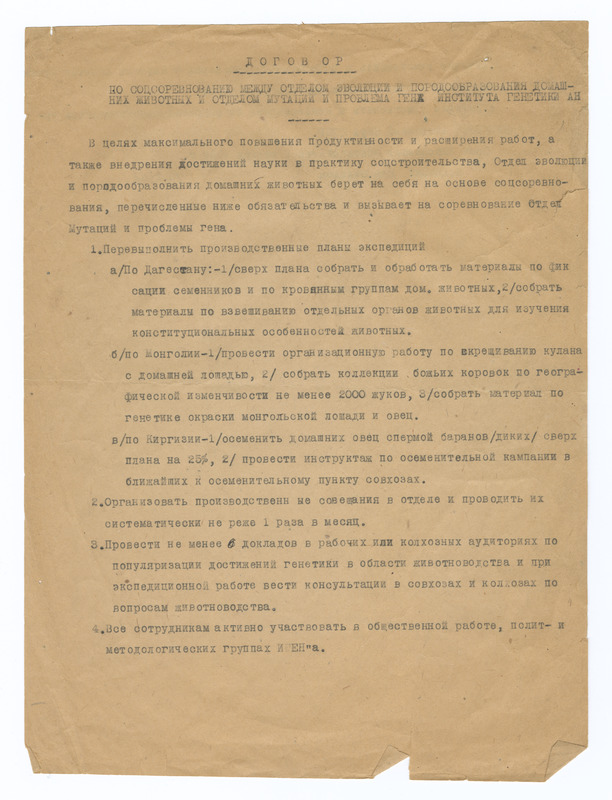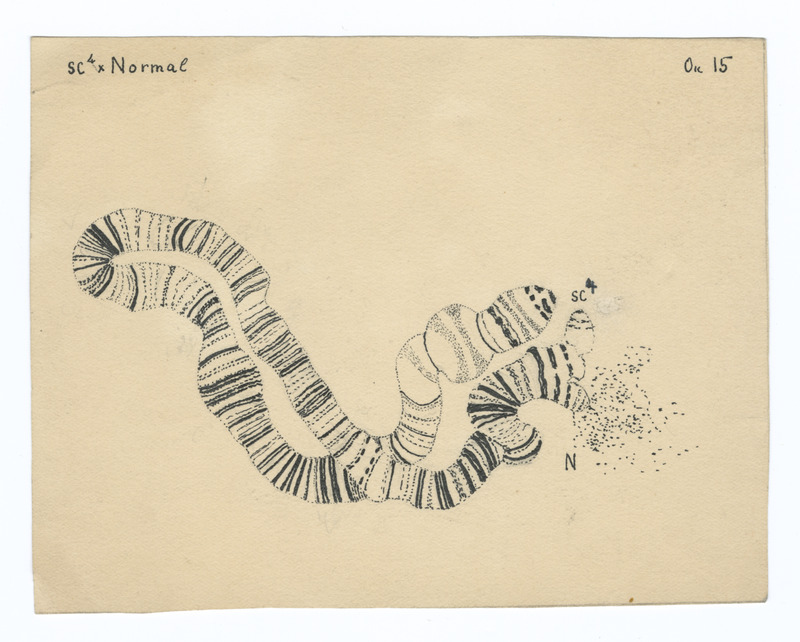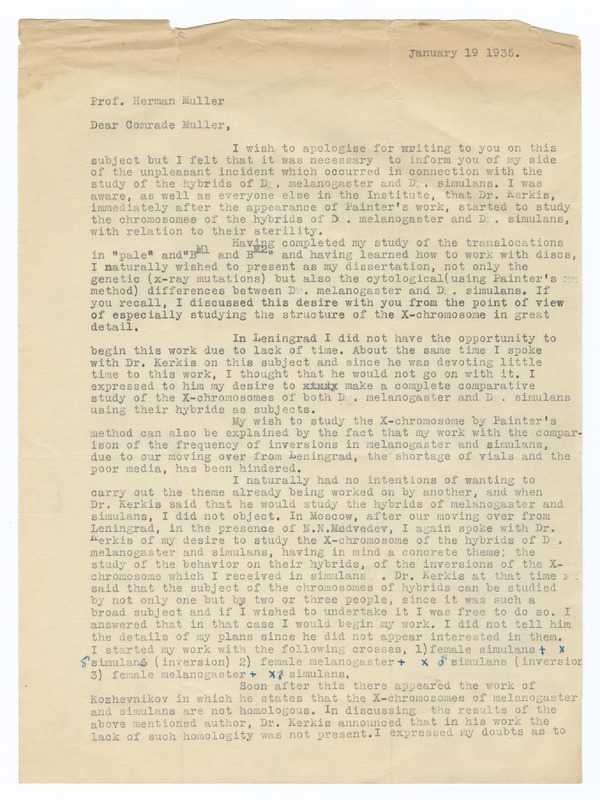

This 1935 photo shows the large lab Muller ran in Moscow. His original lab was in Leningrad at the Institute of Genetics. When the Institute was moved to Moscow in 1934, Muller and his lab followed.

This form is a challenge from the Department of Evolution and Breed Formation in Domesticated Animals to the Department of Mutations and Gene Problems (including the Drosophila genetics group) for "socialist competition". The idea behind socialist competition in the Soviet Union was that all parties would benefit from competition as opposed to the survival of the fittest mentality they saw in capitalism.
The Academy of Sciences of the Soviet Union had a well-developed Drosophila genetics program, appropriately enough jump-started when Muller brought samples with him on his 1922 trip. His lab in Leningrad was enormously productive. In the 1930s, giant chromosomes were discovered in the salivary gland of Drosophila, first by a pair of German biologists, and then independently a short while later by Muller's former associate at Texas, Theophilus Painter. The huge chromosomes allowed for new forms of investigations. Muller and his Soviet colleague Alexandra Prokofyeva-Belgovsky were able to get an estimate for the size of a gene and engage in path breaking research on the physical organization of genes within chromosomes and gene duplication.

Muller's Soviet colleague Alexandra Prokofyeva-Belgovsky was a brilliant cytologist and a leading member of the research team, whom Muller later referred to as the Russian equivalent to the Nobel prize winning cell geneticist Barbara McClintock. Here an image of a chromosome drawn by her can be seen. This was done in the course of their research on the gene Scute.

This internal letter from Muller's lab in the Soviet Union provides an interesting slice of laboratory culture there.
Not long after his arrival, Muller was asked by Nicolai Vavilov to help entice the 1937 International Congress of Genetics to Moscow. The Soviet Union was a rising power and its scientists were eager to show off their scientific progress. However, Vavilov also had a more prosaic motivation. He was losing ground in an interal struggle against Lamarckians in plant genetics, more specifically against the Soviet agronomist Trofim Lysenko and his political allies, and thought the International Congress would buttress his position.
Lysenko had come onto the scene in the 1920s with his work on vernalization, or the modification of a plant’s budding process by exposure to the cold. He maintained that by pre-exposing winter wheat seeds to cold and moisture, they could be planted shortly before spring instead of spending winter in the ground and potentially freezing to death. More controversially, he further maintained this change would be inherited by the next generation.

Muller kept this photograph of his close friend, the Soviet plant geneticist Nicolai Vavilov, on his desk. Possessed of seemingly boundless will and energy, Vavilov travelled over the world collecting seeds for both basic research and the improvement of Soviet agriculture. Despite his scientific eminence, Vavilov lost his career and ultimately his life during Stalin's purges. His reputation was not rehabilitated in the Soviet Union until the 1960s.
Lysenko was a vociferous opponent of Mendelian genetics and the idea that the hereditary material is unaffected by what happens during the life of an organism. He lambasted the claims of Mendelian genetics as bourgeois, reactionary, and divorced from the actual laboring plant breeders. Trofim Lysenko’s particular brand of Lamarckian genetics is called Lysenkoism. Lysenko himself called his scientific program Michurinism, after the famed Russian plant breeder Ivan Michurin. Michurin, who died in 1935, was a practical breeder above all and was largely indifferent to genetics one way or another. His name, however, was politically useful for Lysenko.
Despite Vavilov’s status as an internationally renowned scientist, his bourgeois heritage put him at a disadvantage against Lysenko, and Vavilov hoped the disinfecting light of international scientific attention at a major congress would be able to finally stop the spread of Lysenkoism. Hence his early request that Muller help get the International Genetics Congress to the Soviet Union.